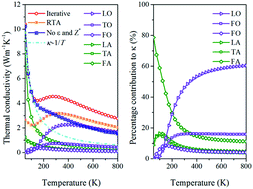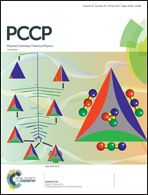Low thermal conductivity of monolayer ZnO and its anomalous temperature dependence
Abstract
Two-dimensional (2D) materials have attracted tremendous interest due to their fascinating physical and chemical properties and promising applications in nano-electronics, where thermal transport plays a vital role in determining the performance of devices. In this paper, we present a first-principles study of the thermal transport properties of monolayer zinc oxide (ZnO), which has potential applications in nano-electronics and thermoelectrics. The thermal conductivity of monolayer ZnO is found to be as low as 4.5 W m−1 K−1 at 300 K, which is dramatically lower than those of bulk ZnO and lots of other 2D materials. A detailed analysis is performed in the framework of Boltzmann transport theory and electronic structure to understand low thermal conductivity. Most surprisingly, the thermal conductivity of monolayer ZnO slowly decreases with temperature and does not follow the conventional 1/T law. This unusual phonon transport behavior arises from the dominant contribution of optical phonon modes to the overall thermal transport in monolayer ZnO, which has been rarely reported in the literature, and the significantly increased specific heat of the high frequency (optical) phonon modes with increasing temperature, both of which compensate the decrease in the phonon relaxation time. Our study highlights the abnormal thermal transport properties of the new 2D material and we anticipate that this research will motivate the experimentalists to further study other physical and chemical properties of monolayer ZnO for its emerging applications in thermoelectrics, thermal circuits, and nano-/opto-electronics.



 Please wait while we load your content...
Please wait while we load your content...